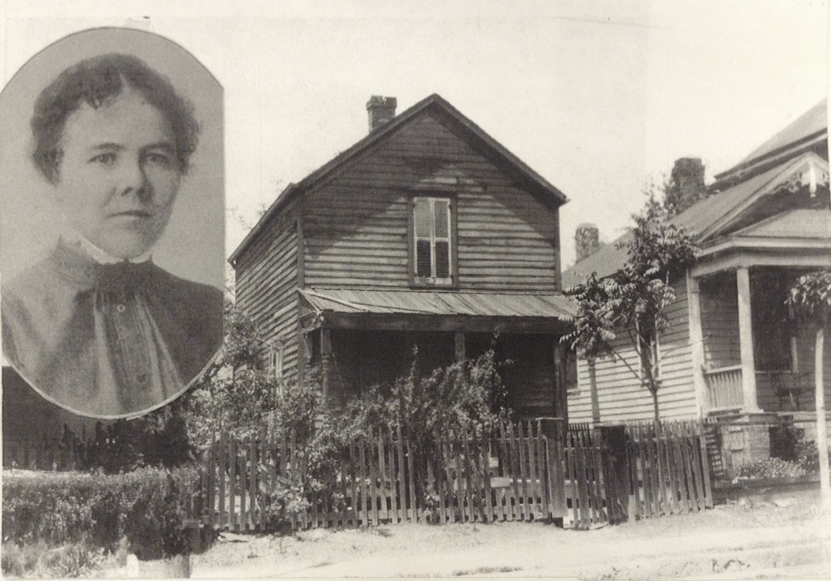During the late 19th and early 20th centuries, Kansas City underwent significant growth, transforming into a busy trading and transportation hub that attracted a continuous influx of settlers. Within the growing population, two Native American sisters, Eliza “Lyda” and Helena “Lena” Conley of the Wyandot tribe, found themselves in a fierce conflict with city officials over the preservation of the Huron Cemetery. Lyda went on to break barriers for women, and, today, the burial ground she battled for is preserved for future generations.
During Lyda’s lifetime, many members of the Wyandot Nation chose to relocate to Oklahoma. However, according to Chief Judith “Trǫnyaęk” Manthe of the Wyandot Nation of Kansas, the Conley family wanted to stay to look after the cemetery where their ancestors were laid to rest.

Lyda Conley

Huron Cemetery
In 1906, Kansas City officials urged the Wyandot Nation to sell their communal Huron Cemetery, citing plans to convert it into a parking lot. This plan involved exhuming bodies and relocating them to Garrow Cemetery. This move was strongly opposed by the Conley sisters. “They did not want this done,” Chief Manthe said. “I mean, it was a tribal thing that we fought all the way. But the Conley sisters took it just a little bit further.”
Anticipating a battle to preserve the cemetery, Lyda, who had attended Park College, went on to pursue a law degree. Doing so, she broke barriers as the first Native American woman admitted to the Kansas Bar Association. Then, in 1910, she made history as the first woman to present a case to the Supreme Court where she argued for the land’s federal protection. Chief Manthe, a descendant of the Conley family, has newspaper articles from across the country that chronicle Lyda’s landmark Supreme Court case. While she did not win, Lyda’s efforts garnered the public’s attention nationwide and even resulted in marriage proposals.
Following the courtroom defeat, Lyda returned home, marched up the cemetery steps, and sealed the gates with a padlock. A warning sign was erected: “Beware, trespassers, beware.” For added measure, Lyda, Helena, Chief Manthe’s great-grandfather, and others built Fort Conley inside of the cemetery. It was a modest 6-foot by 8-foot shack. Armed with their father’s gun, the Conley sisters lived in the fort and fiercely defended the property for two years. “(The gun) was not loaded by the way,” said Chief Manthe. “There are newspaper articles about how Lyda chased contractors off the grounds. She was very persistent that nobody was going to tear those graves up.”
Eventually, Kansas Senator Charles Curtis took notice of Lyda’s cause and stepped in to help. In 1916, he obtained an injunction preventing the Huron Cemetery’s sale and ensuring its preservation.
While the Conley sisters were practiced at defending their rights, Lyda made it a point to impart this resolve on other women. According to Chief Manthe, Lyda inspired women to stand their ground and safeguard what matters most. This determined spirit also lived in Helena, a skilled herbalist and reputed witch whose tombstone in Huron Cemetery reads, “cursed be the villain that molest their graves.”

Lyda Conley

After the court ruling to protect her ancestral burial ground, Helena found herself once again in a physical confrontation with land trespassers. “Somebody was cutting trees down on their (home’s) property and she told her neighbor, ‘Tell my sister, I’ll be back,’” said Chief Manthe. “When she came back, she had blood running out of her ears.” Despite being injured in the altercation, Helena managed to defend her land and forcefully expel the men from her property.
No doubt the tradition of strong women has been passed down to the Conley sister’s descendants. Today, Chief Manthe advocates for federal recognition of the Wyandot Nation of Kansas and conducts presentations to promote cultural understanding. She and Second Chief Louisa Libby are also focused on preserving historical landmarks like Quindaro and the Underground Railroad, underscoring their commitment to their Native heritage and educating the public.
As a result of the Conley sisters’ efforts, the Huron Cemetery was successfully preserved through the 1990s until a struggle ensued between the federally unrecognized Wyandot Nation of Kansas and the federally recognized Wyandotte Nation, headquartered in Oklahoma. Chief Manthe said, during that time, attempts were made by the Wyandotte Nation to build a casino on the burial grounds. The Wyandot tribe took the battle to Federal Court. Their determination to protect the grounds paid off. Today, the cemetery is designated as a National Historic Landmark and is provided with ongoing security to protect the cultural heritage site.
Featured in the November 11, 2023 issue of The Independent.
By Monica V. Reynolds